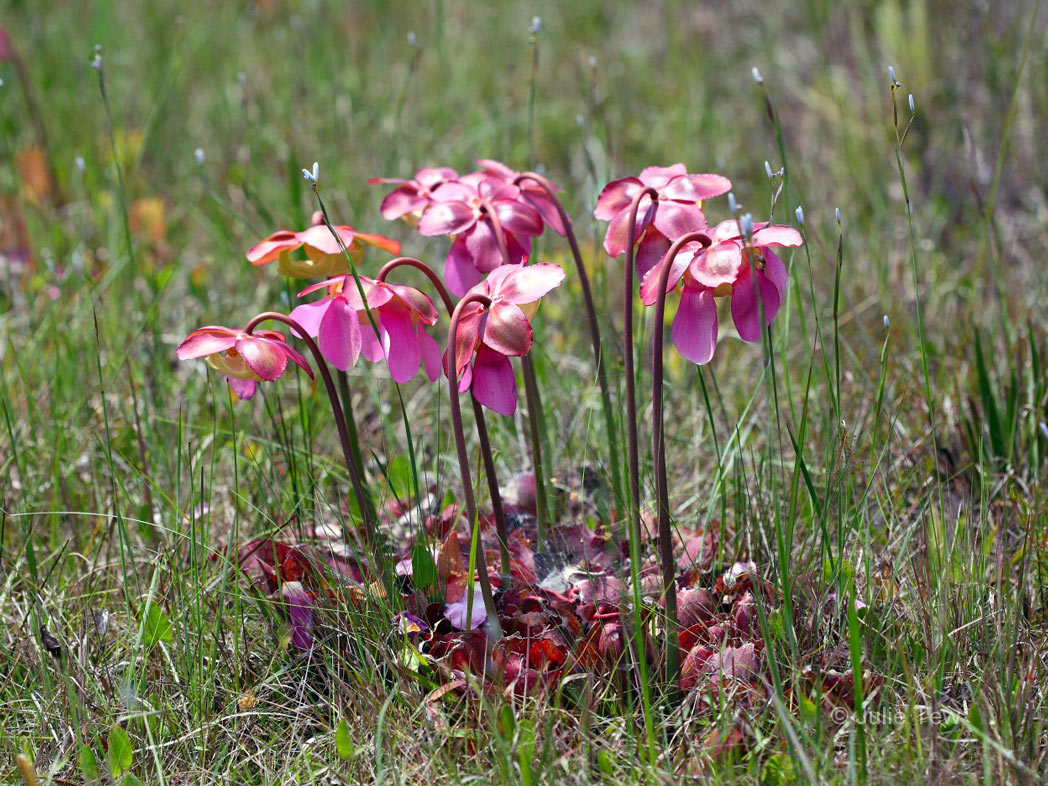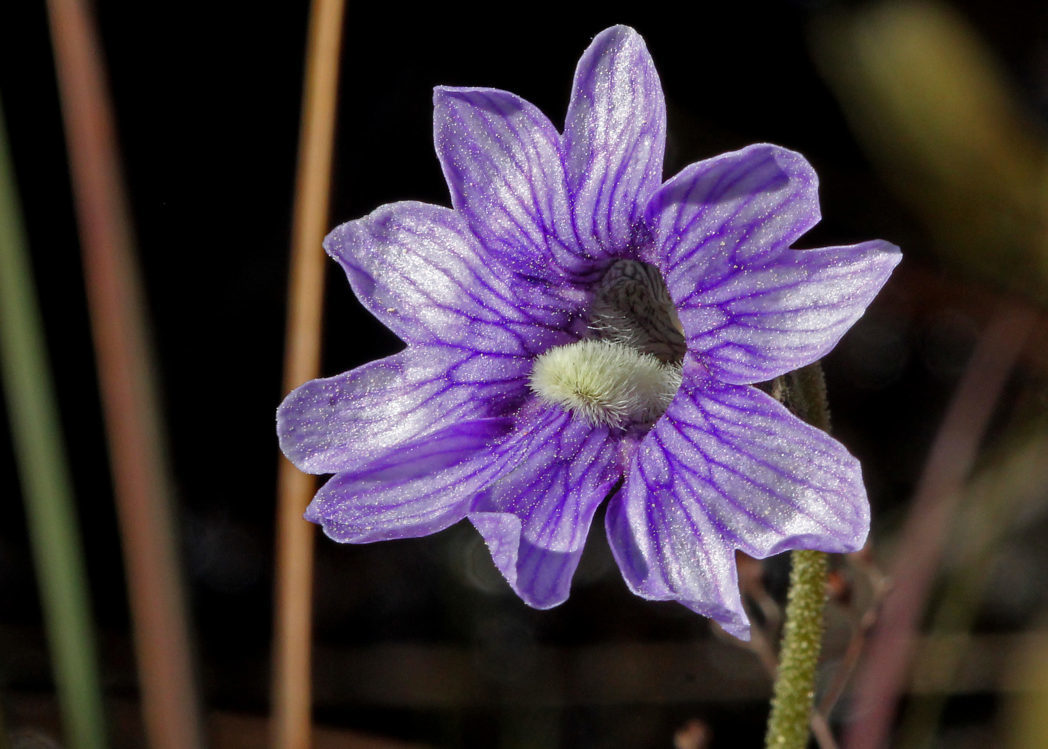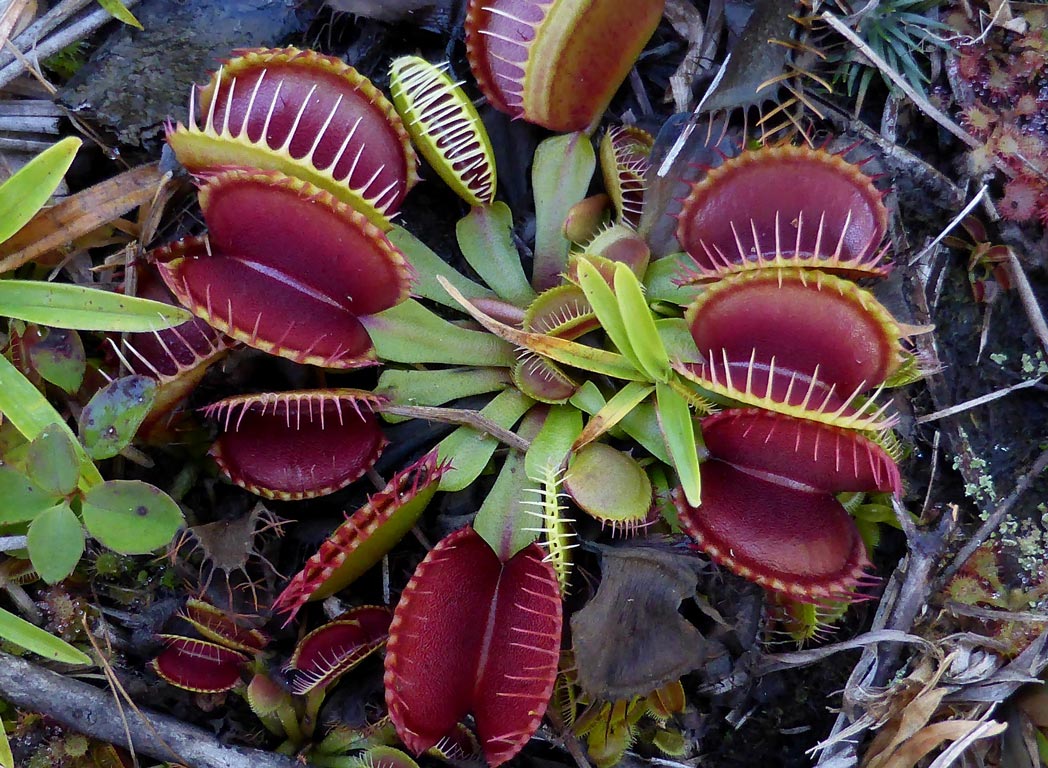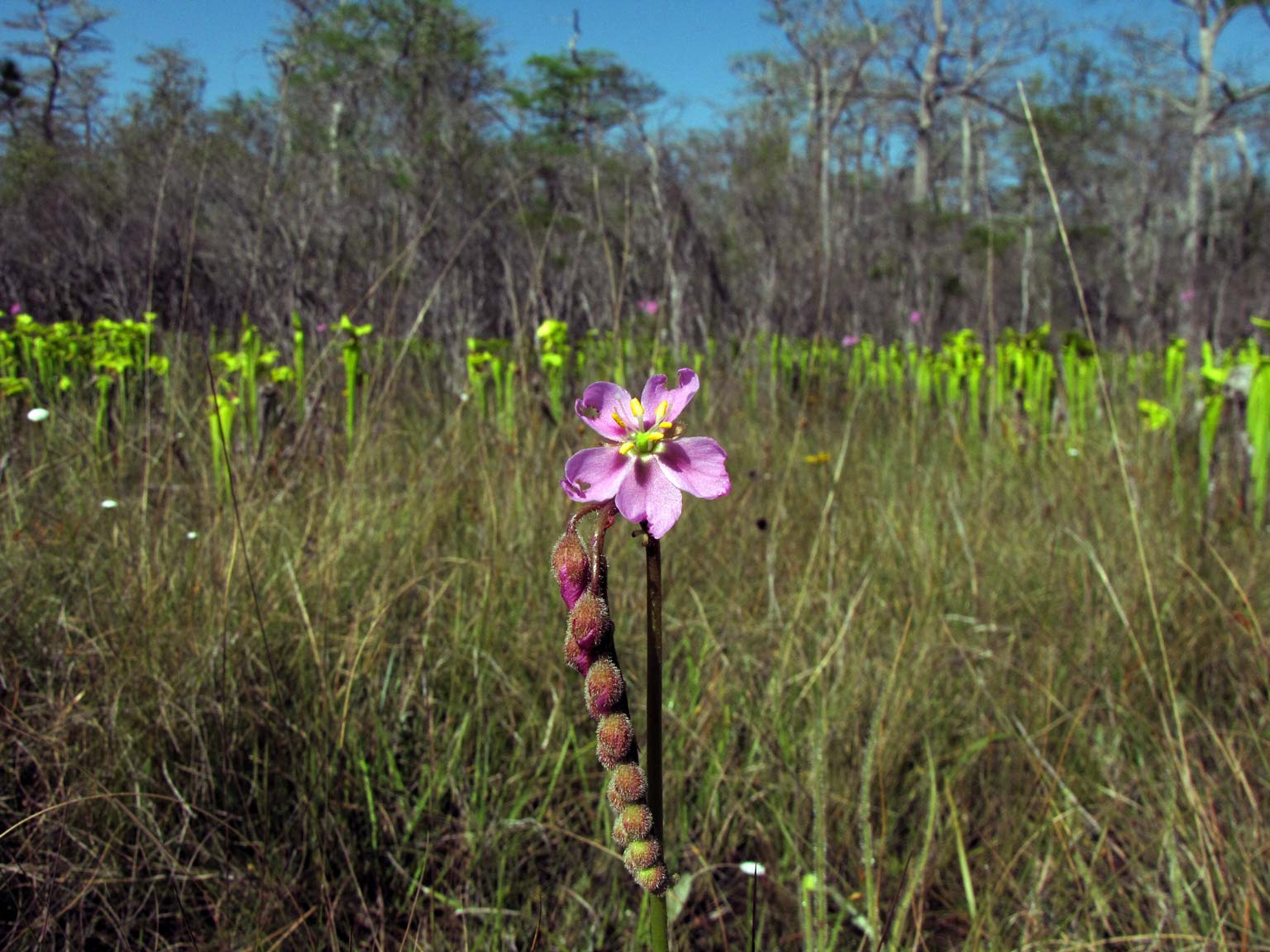Carnivorous plants — novel natives with showy flowers
Pictured above: Tracy’s sundew (Drosera tracyi) blooms among Yellow pitcherplants (Sarracenia flava) along SR 65 in Liberty County.
Article and photo by Jeff Norcini.
Many wildflowers bloom in the spring. Among them are carnivorous plants, although we tend to think more of their novel means of obtaining essential nutrients than we do of their flowers.
There are four types of carnivorous plants native to Florida: pitcherplants, sundews, butterworts and bladderworts. They occur in moist areas with acidic soils like bogs, savannas and wet pinelands, as well as along roadsides bordering such habitats. However, bladderworts most often are seen floating in ponds and swamps with their flower stems extending above the water. Occasionally, bladderworts occur in muddy areas.


Florida’s native carnivorous plants have very showy flowers, except for the miniscule white to pinkish flowers of the smaller sundew species — Dwarf sundew, Pink sundew, and Spoonleaf sundew, plants that you will need to look carefully for. The reddish basal rosette of leaves are only about 2 to 4 inches in diameter depending on the species. They are easier to spot on a sunny day as the drops of “dew” glisten in the sunlight. (The “dew” is actually tiny drops of a sticky substance secreted from glands on each leaf). When you find one sundew, you are likely to find many more in the same area.
Below are some of the carnivorous plants you can expect to see blooming. Click on the names for range maps and photos, and on “Additional information” for more details about some species.
- Bladderworts (Utricularia spp.) (Additional information)
- Dwarf sundew (Drosera brevifolia)
- Pink sundew (Drosera capillaris) (Additional information)
- Spoonleaf sundew (Drosera intermedia)
- Threadleaf sundew (Drosera filiformis var floridana)
- Tracy’s sundew (Drosera tracyi)
- Gulf coast redflower pitcherplant (Sarracenia rubra subsp. gulfensis)
- Gulf purple pitcherplant (Sarracenia rosea)
- Hooded pitcherplant (Sarracenia minor)
- Parrot pitcherplant (Sarracenia psittacina)
- Wherry’s redflower pitcherplant (Sarracenia rubra subsp. wherryi)
- Whitetop pitcherplant (Sarracenia leucophylla)
- Yellow pitcherplant (Sarracenia flava)
- Blueflower butterwort (Pinguicula caerulea) (Additional information)
- Chapman’s butterwort (Pinguicula planifolia)
- Primrose-flowered butterwort (Pinguicula primuliflora)
- Small butterwort (Pinguicula pumila) (Additional information)
- Violet butterwort (Pinguicula ionantha) (Additional information)
- Yellow butterwort (Pinguicula lutea) (Additional information)
DID YOU KNOW?
Venus flytrap (Dionaea muscipula) occurs in Franklin, Liberty and Wakulla counties, but it is not native to Florida. It is only native to North and South Carolina.

Where to look for carnivorous wildflowers
Carnivorous plants occur throughout Florida, but the best place to see them is in the northern half of the state. Pitcherplants only occur north of Lake Okeechobee, with the Panhandle being the best place to see them all. Check out these natural areas for opportunities to see carnivorous plants in bloom:
Panhandle
- Apalachicola National Forest (SR 65, Liberty County)
North/North Central Florida
- Lower Suwannee National Wildlife Refuge (south entrance on CR 347, Levy County)
- Paynes Prairie Preserve State Park (Alachua County)
Central Florida
- Merritt Island National Wildlife Refuge (SR 3, Brevard County)
South Florida
- Okaloacoochee Slough (aka “OK Slough”) (Hendry County)
- CREW Marsh Trails (Collier County)
Non-natives have their days in the sun
While there are many wildflowers that bloom in the spring, wildflowers in disturbed areas like roadsides, residential and commercial landscapes, and pastures can be a mix of native and non-native species. The spring wildflowers listed below are showy and have value to pollinators but are not native to Florida.
- Blanketflower (Gaillardia pulchella)
- Goldenmane tickseed (Coreopsis basalis)
- Drummond phlox (Phlox drummondii)
- Many clovers and clover-like plants, including
Submit your photos!
It’s easy to submit photos of the native wildflowers you see for posting on the Foundation’s What’s in Bloom map. Just email them to Photos@Flawildflowers.org. You can also post photos to the Florida Native Wildflowers Facebook group and Florida Wildflowers Flickr group. For all submissions, please include the plant’s scientific name (common name is OK) and its location. If you are uncertain about a wildflower’s nativity to Florida, consult the Atlas of Florida Plants before posting. If submitting a photo to the Foundation’s Facebook group and you can’t identify it using the Atlas of Florida Plants, inquire about nativity when posting. There are many other good botany resources noted in the Facebook group’s rules.

